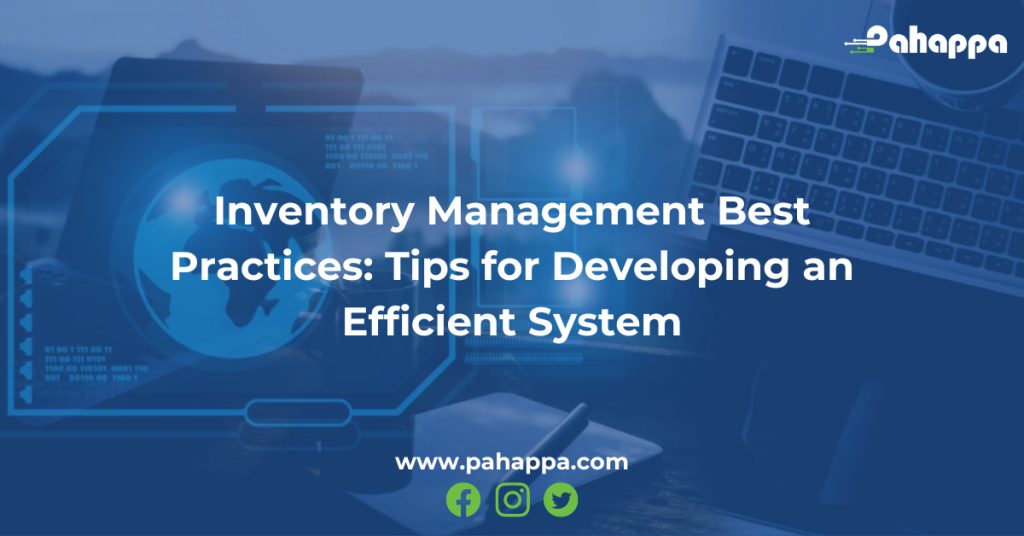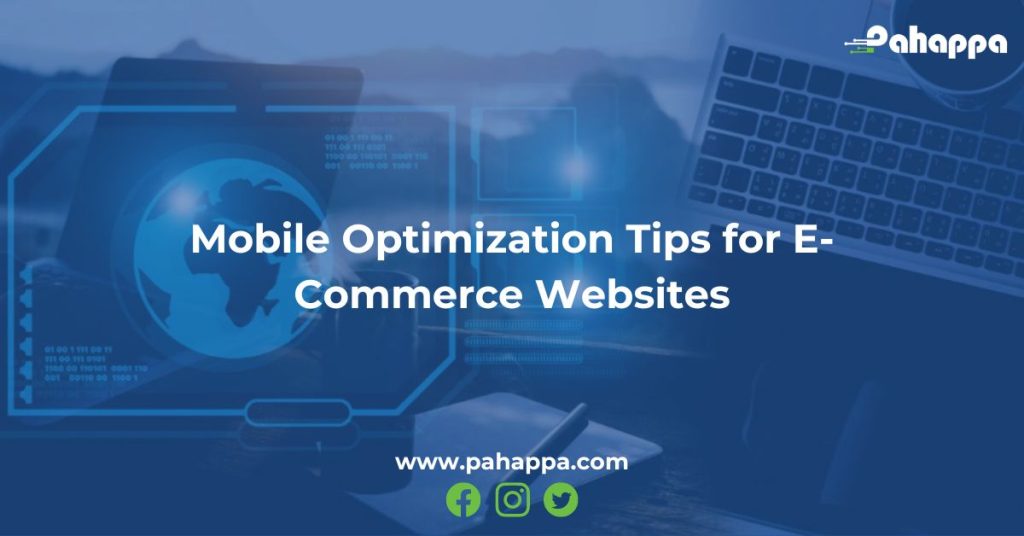Blog
Categories

You might be wondering if an Inventory Management System is for you. But if you distribute products of any kind, then tracking supplier orders and product flow is a priority to you. The IMS modules we offer 3 modules: Production, Inventory, and Shipping module. This system tracks products from their supplier raw materials to the delivery of the finished product to the consumer. Inventory management systems are essential for a wide range of businesses and organizations across various sectors. Here are some examples:
- Retail Businesses: These are businesses that sell goods to final consumers. They use IMS software to track stock coming in and out of the business. The IMS software also helps forecast or predict products that could be in demand. Stock will always be available even during hectic seasons like the Christmas and Easter holidays. Examples of businesses in this sector include:
- Supermarkets
- Department stores
- Convenience stores
- Specialty retailers (e.g., electronics stores, clothing stores)
- Manufacturing Companies: Manufacturing companies are perhaps the ones that benefit most from IMS software. Because they manufacture products, IMS software can be used in this sector to its fullest form. With the production module, manufacturing companies can get insights and reports from supplier orders they make, and measure raw material variances. They can use the shipping module to ship products to different locations and use the inventory module to manage stock in and out of the warehouses. Here are a few examples of manufacturing companies that can benefit from the IMS software:
- Automobile manufacturers
- Electronics manufacturers
- Pharmaceutical companies
- Food and beverage producers
- Wholesale Distributors: Just like retail distributors, wholesale distributors sell stock, but not to the final consumer. Wholesale distributors sell in bulk and so they buy in bulk as well. Because many of these distributors have warehouses in different locations, there is need for warehouse management software. Wholesale distributors also use IMS to track inventory in and out of their warehouses. These are examples of businesses in this sector:
- Distributors of consumer goods
- Industrial equipment distributors
- Wholesale suppliers of raw materials
- E-commerce Businesses: E-commerce businesses use IMS software to track their inventory. The software can also be use to predict demand of stock. Since e-commerce businesses sell directly to consumers, they find it very important not to overstock or understock their products. Also because this is online shopping, e-commerce stores do not have enough warehouse storage for goods. Having a way to track what is being sold becomes very important to the growth of the business. Here are some examples of e-commerce businesses:
- Online retailers
- Drop shipping businesses
- Fulfillment centers
- Healthcare Facilities: Because Healthcare facilities provide ,medication, there is need to track medicine stock. It is also important to track orders from different suppliers that procure different medicine. An IMS software helps automate all this. These are some of the businesses in the healthcare sector:
- Hospitals
- Clinics
- Pharmacies
- Hospitality Industry: Almost everyday the hospitality industry procures commodities from different department like food, sanitation, or even sports equipment. But how can they keep track of what they procure? having and Inventory Management system helps them know what is missing and how much has stock is left in particular departments. Here are examples of businesses in the Hospitality industry:
- Hotels
- Restaurants
- Catering services
- Logistics and Transportation Companies: Because Logistics companies do a lot of shipping of orders, an IMS would be a great tool to track shipping orders. Here are examples of businesses in this sector:
- Freight forwarders
- Shipping companies
- Warehousing and distribution centers
- Agriculture and Farming: Once produce of harvested, commercial farms use IMS tools to transport it to different locations depending on the supply requested. IMS software can also help to forecast how much produce should be made planted for nest seasons depending on the demand analytics. Here are some examples of businesses in this sector:
- Farms
- Agricultural cooperatives
- Agribusiness companies
These sectors represent just a portion of the diverse range of businesses and organizations that benefit from implementing inventory management systems to optimize their operations, minimize costs, and improve customer satisfaction. To learn more about Inventory Management Software, Visit Us here.

The vast universe of e-commerce contains endless digital shelves and fierce competition. But one crucial element sets apart the giants from the transient. And that is customer loyalty. In an era where the consumer is exposed to a variety of options, businesses must not only attract but retain customers. So how does one create a pool of loyal customers? By building an interactive and navigational e-commerce website. Below are some of the ways e-commerce websites can help increase customer loyalty:
Crafting Seamless Experiences:
Picture this: a virtual store where navigation is intuitive, products are easily discoverable, and with an easy checkout process. Such is the hallmark of an e-commerce website that is committed to creating memorable shopping experiences. A customized e-commerce website enables users to enjoy the shopping experience at every touchpoint with benefits like responsive design to lightning-fast load times.
Building Trust Brick by Brick:
Trust forms the bedrock of any enduring relationship, and the digital realm is no exception. E-commerce websites act as guardians of trust, ensuring secure transactions, transparent pricing, and seamless customer service. Let’s be honest, by the time you are willing to give your bank account information you trust the company well enough at least to know that they can deliver. With robust encryption and stringent data protection measures, customers can shop with peace of mind, knowing their sensitive information is safeguarded.
Providing Rewards and Recognition:
With loyalty comes rewards, and e-commerce websites are masters of this. Through innovative loyalty programs and rewards schemes, businesses incentivize repeat purchases and brand advocacy. we have all shopped from sites that offer a variety of discount policies like Shein. Aliexpress for example limits your fist purchase on the site but refusing you to exceed a certain amount of money. Whether it’s earning points with every purchase, unlocking exclusive perks, or receiving personalized recommendations, customers feel valued and appreciated—a powerful catalyst for loyalty.
Use of Support Experience:
Customer support serves as the guiding light for lost souls and the solace for troubled hearts. E-commerce websites excel in providing prompt, personalized support across multiple channels, be it live chat, email, or phone. By addressing queries and concerns with empathy and efficiency, businesses not only resolve issues but also forge deeper connections with their customers. Knowing that there is someone ready to help you get the best out of your shopping experience is enough motivation for you to shop there again.
Using the Power of Data:
Data is the lifeblood of the digital age, and e-commerce websites are the conduits through which it flows. By harnessing the power of analytics, businesses gain invaluable insights into customer behavior, preferences, and purchasing patterns. Armed with this knowledge, they can tailor marketing efforts, personalize recommendations, and anticipate future needs—laying the groundwork for enduring loyalty.
Community and Connection:
In the interconnected web of cyberspace, e-commerce websites serve as hubs of community and connection. Through engaging content, vibrant social media channels, and interactive forums, businesses foster a sense of belonging among their customers. Some sites have pages dedicated to customer reviews with videos that User Generated Content buyers can post on their social media platforms. By nurturing these virtual communities, e-commerce websites transcend mere transactions, becoming catalysts for shared experiences and collective engagement.
To conclude e-commerce websites offer a great deal of satisfaction that many physical shops would even dream of achieving. And the best part is, you don’t have to leave the comfort of your own couch to make a sale. So why not set up a customized online shop today? Visit us at Plot 163, Mutesa 2 Road, Ntinda, Kampala to get started on your e-commerce website.

As a business owner seeking to improve your inventory operations, having an Inventory Management System must be a very attractive feature to incorporate into your business. And you are not alone. The adoption of IMS is on the rise globally. A study by Grand View Research forecasts that the global IMS market will reach $5.2 billion by 2025, with a compound annual growth rate (CAGR) of 6.8% from 2020 to 2025.
But what exactly is an Inventory Management System?
An Inventory management system is a software platform that tracks and monitors your inventory and stock, making it easy to report on how much produce you have brought in, how much stock you sold, and how much stock/ raw materials you will need in the future. With an IMS, companies can monitor how much they are putting into the business (production) and how much is coming out to sell to sell to the final customer (stock). Because warehouse storage is vital when companies need to store stock while awaiting customer demand, it becomes important for companies to monitor what stock will be going in and out of each warehouse at each particular location. Inventory management system technology is significantly reshaping warehouse operations by introducing automation, efficiency, accuracy, and optimization into the process of handling inventory.
Here’s how:
- Real-Time Tracking: Inventory management systems enable real-time tracking of inventory movement within the warehouse. This means warehouse managers have up-to-date information about stock levels, location, and movement, allowing for better decision-making and reduced stockouts or overstock situations.
- Automation: Advanced inventory management systems often integrate with warehouse automation technologies such as barcode scanners, RFID (Radio Frequency Identification), and IoT (Internet of Things) devices. These technologies can automate tasks like inventory counting, picking, packing, and shipping.
- Optimized Storage: Inventory management systems utilize algorithms and data analytics to carefully use storage space within the warehouse. By analyzing factors like demand patterns, and storage capacity, these systems can suggest storage locations for each item, minimizing travel time and maximizing space utilization. This synchronizes the storage according to demand in a particular location.
- Demand Forecasting: This is very important when monitoring inventory. It helps companies avoid over stocking in particular warehouses. If the demand for a product in a particular location is of an average number, demand forecasting can help monitor the patterns and and reduce excess sales. Many inventory management systems incorporate demand forecasting algorithms that analyze historical sales data and market trends to predict future demand. By accurately forecasting demand, warehouses can maintain optimal inventory levels, reducing excess inventory costs and stockouts.
- Order Fulfillment Efficiency: With inventory management systems, order fulfillment processes become more efficient. Systems can prioritize orders based on factors like urgency, order size, and shipping method, optimizing the picking and packing process to minimize order processing times and improve customer satisfaction.
- Supplier Integration: Most manufacturing companies have a variety of suppliers. The Pahappa inventory management system facilitates integration with suppliers, allowing for real-time visibility into supplier inventory levels, lead times, and order statuses. This integration enables better coordination between warehouses and suppliers, and eventually reducing stockouts.
- Data Analytics and Insights: Inventory management systems generate data about warehouse operations, inventory performance, and customer behavior. By leveraging advanced analytics tools, warehouses can gain valuable insights into their operations, identify areas for improvement, and make data-driven decisions to optimize processes further.
So now that you know how Inventory software can help automate your warehouse operations, why not procure one today? Visit us at this location to get a quote or call us to find out more.

If you sell products, then having an e-commerce website is the perfect way to launch your presence online. An e-commerce site will help you reach a new kind of client, the online shopper. These are consumers who buy products online. With an e-commerce site, you can sell your products online and build your brand. Creating a successful e-commerce website requires attention to various features and functionalities to attract customers, drive sales, and ensure a smooth shopping experience. Another benefit is brand awareness. With a website, you have a high chance of proving your company’s credibility and trust. And you can always use other forms of online presence like social media, email marketing, or even bulk SMs to bring traffic to your site.
So now that we know how important it is to have a website, let’s discover how best to get started. Designing a website is one of the most important things you can do for your business. But what do you need to design a user-friendly yet effective website? Here are 10 essential features every successful e-commerce website should have:
- User-Friendly Design: The website should have a clean and intuitive design with easy navigation. Make sure it’s responsive across all devices to cater to mobile users as well. Mobile commerce (m-commerce) is rapidly growing in Africa, driven by the increasing availability of affordable smartphones and improving internet infrastructure. Therefore having a responsive website makes it easier for mobile users to interact freely with your site.
- High-Quality Product Images and Descriptions: Clear, high-resolution images from multiple angles, along with detailed product descriptions, help customers make informed purchasing decisions. Online shoppers cannot physically handle the products that you sell to prove their authenticity or quality. So remember that these shoppers are trusting that what you show them is what they will get. It is therefore up to you to give as much clarity as you can.
- Simple Checkout Process: Streamline the checkout process to minimize cart abandonment. Offer guest checkout options and integrate popular payment gateways for convenience. In order to enable an amazing user experience, you must make sure that users get the most information in the least time possible. Users abandoning their carts may show indecisiveness or unclarity. Or they might not know how to checkout. So make it easy for the users to view the product and buy.
- Search and Filter Functionality: Implement robust search and filter options to help customers find products quickly based on categories, price range, size, color, etc. This helps users find exactly what they are looking for without spending a lot of time on your website.
- Security Measures: Ensure the security of customer data and transactions by integrating SSL certificates, using trusted payment gateways, and complying with relevant security standards. Make sure your website developers off the best payment gateways available in your country. Also provide more payment options because there might some vary according to location.
- Customer Reviews and Ratings: Allow customers to leave reviews and ratings for products. It is common knowledge that a review goes a long way. People like to see what what customers say about your product. Positive reviews build trust and credibility, influencing purchasing decisions.
Additional Features to include:
- Personalized Recommendations: Use algorithms to provide personalized product recommendations based on customer browsing and purchase history, increasing the likelihood of upselling and cross-selling.
- Responsive Customer Support: Offer multiple channels for customer support, including live chat, email, and phone support. Having someone online at at all times willing to answer customer inquiries builds trust and enhances clarity about products. Promptly address customer inquiries and concerns to enhance satisfaction.
- Easy Returns and Refunds Policy: Clearly communicate your returns and refunds policy to customers and make the process hassle-free. A lenient policy can increase customer confidence in making purchases.
- Analytics and Insights: Integrate analytics tools to track website performance, user behavior, and sales metrics. Analyzing this data can help optimize marketing strategies, improve user experience, and identify areas for growth.
By incorporating these essential features into your e-commerce website, you can enhance its functionality, attract more customers, and drive higher conversions, ultimately leading to greater success in the online marketplace. Get started with your e-commerce site today. Visit us today to get started.

An inventory management system is a software-based solution designed to efficiently track, manage, and control a company’s inventory levels. It encompasses various tasks and functions related to inventory, including ordering, receiving, storing, tracking, and selling goods. So managing stock in and out of a company or organization. IMS is usually used by manufacturing companies and even freight companies. Developing an efficient inventory management system is necessary for any kind of operating business selling goods, as it directly impacts costs, customer satisfaction, and overall operations. Here are some best practices and tips for creating an effective inventory management system:
- Utilize Inventory Management Software: Invest in robust inventory management software that suits your business needs. This software can automate many tasks, such as tracking stock levels, generating reports, and managing orders. Our Inventory Management System offers 3 modules that handle the inventory of products from when they are produced to when they get to the final customers.
- Set Par Levels: Determine the minimum and maximum quantities of each product you need to have on hand. This helps prevent stockouts and overstocking, optimizing cash flow and storage space. You can set a time limit for stock flow, maybe monthly or quarterly. This also reduces extra expenses that would have been spent in case of overstocking. An IMS automatically records stock, cash flow, and storage space.
- Implement ABC Analysis: Categorize your inventory into A, B, and C categories based on their value and turnover rate. Focus on optimizing the management of high-value items (A) while maintaining adequate control over lower-value items (C). This helps you know how what stock to prioritize on according to the demand. An IMS can update real-time reports depending on what items are most needed hence valuing them as A items.
- Establish Standard Operating Procedures (SOPs): Develop clear SOPs for receiving, storing, and fulfilling orders. Standardizing these processes ensures consistency and reduces errors in inventory management.
- Regularly Audit Inventory: Conduct regular audits to verify the accuracy of your inventory records. This helps identify discrepancies, shrinkage, and inefficiencies in your system. With an IMS, you will be able to have real time audits depending with customized time sets.
- Embrace Just-in-Time (JIT) Inventory: Adopt JIT principles to minimize holding costs and reduce excess inventory. By ordering or producing goods only when needed, you can streamline operations and improve cash flow. An IMS audits and records the stock in and out in real time. This makes it easy to automate reports.
- Utilize Barcode or RFID Technology: Implement barcode or RFID technology for accurate and efficient tracking of inventory movements. This streamlines processes such as receiving, picking, and replenishment, reducing manual errors and improving productivity. Barcode and RFID (Radio Frequency Identification) are two types of technology used for tracking and identifying objects, including inventory items, in various industries. Both barcode and RFID technologies play important roles in inventory management, with businesses choosing the one that best suits their needs based on factors such as cost, complexity, and application requirements.
- Forecast Demand: Use historical sales data, market trends, and other factors to forecast demand accurately. This helps prevent stock outs and overstocking, ensuring you have the right amount of inventory on hand to meet customer demand. This also enables management to informed decisions about the products that sell the most and what they can stock up.
- Collaborate with Suppliers: Build strong relationships with suppliers to ensure timely deliveries and negotiate favorable terms. Collaborating with suppliers can also lead to better inventory visibility and responsiveness to market changes. With an IMS, you can save contacts of suppliers and have automatic reminders on stock pickups.
- Train Employees: Provide comprehensive training to your staff on inventory management procedures, software usage, and best practices. Well-trained employees are essential for maintaining accuracy and efficiency in your inventory system. Monitoring Inventory has a lot to do with numbers so having a software operated with trained employees benefits the company as a whole.
- Monitor Key Performance Indicators (KPIs): Track KPIs such as inventory turnover ratio, fill rate, and carrying costs to evaluate the effectiveness of your inventory management system. Use these metrics to identify areas for improvement and make informed decisions.
By incorporating these best practices into your inventory management strategy, you can develop a more efficient system that optimizes costs, improves customer satisfaction, and enhances overall business performance. To get started on your Inventory software, get a quote from us here.

Mobile optimization in e-commerce refers to designing and configuring an online store to ensure that it functions efficiently and effectively on mobile devices such as smartphones and tablets. This includes optimizing website layout, content, images, and navigation to provide an amazing user experience on smaller screens. Africa has seen a significant rise in mobile internet usage due to the widespread adoption of smartphones.
According to the GSMA Mobile Economy report, Africa had over 1 billion mobile subscribers by 2020, with mobile internet penetration reaching 39% of the population. And according to a report by Jumia, mobile transactions accounted for 57% of online transactions in Africa in 2020. Mobile optimization is crucial for e-commerce websites as an increasing number of users shop through their smartphones. So now more than ever is the best time to improve your e-commerce website to attract sales via mobile devices.
Best Ways to Optimize your Website
- Have a Responsive Design: Ensure your website is built using a responsive design approach, which automatically adjusts the layout and content based on the user’s device screen size. This provides an optimized user experience across various devices, including smartphones and tablets.
- Fast Loading Speed: Mobile users expect websites to load quickly. Imagine searching for your finally finding your favorite shoes on Instagram and when you click the link to the shoe site, it takes over 10 minutes to load. In this fast paced world, even a minute is too slow. Optimize images, minimize HTTP requests, enable browser caching, and utilize content delivery networks (CDNs) to improve loading times.
- Simplify your navigation: Simplify your website navigation for mobile users by using a clear and concise menu structure. Implement a sticky header or hamburger menu to provide easy access to important pages and categories. You could even link your logo to the homepage for easy navigation.
- Mobile-Friendly Search: Ensure your search functionality is optimized for mobile users. Implement features like auto-complete, filters, and predictive text to enhance the search experience on smaller screens.
- Streamlined Checkout Process: Simplify the checkout process to reduce friction for mobile users. Implement features like guest checkout, one-click payment options, and auto-fill for forms to streamline the checkout experience.
- Optimized Forms: Design forms with mobile users in mind by minimizing the number of fields and using mobile-friendly input types (e.g., date pickers, numeric keyboards). No buyer wants to go through a long process inputting their data, especially when the item they are purchasing is on sale. Implement validation messages in real-time to assist users in filling out forms correctly.
- Large Tap Targets: Make sure buttons, links, and interactive elements are large enough to be easily tapped with a finger on a touchscreen device. Aim for a minimum tap target size of around 48×48 pixels to accommodate different screen sizes and finger sizes.
- Optimized Images and Videos: Compress images and videos to reduce file size without compromising quality. Use responsive images and lazy loading techniques to ensure fast loading times and improved performance on mobile devices. Videos also help disseminate information fairly quickly making explainer videos easy to follow.
- Mobile-Friendly Content: Format your content to be easily readable on smaller screens. Use concise paragraphs, clear headings, and bullet points to break up text and improve readability. Avoid using small font sizes and ensure text is legible without zooming.
- Optimized for Local Search: If you have physical stores, optimize your website for local search by including relevant keywords, business information, and location-based content. Keywords are words or phrases a website can leverage in order to get ranked on search engines. Examples of keywords for an e-commerce site would be like “best e-commerce sit in Uganda” or “shop now”.
- Test Across Devices and Browsers: Regularly test your e-commerce website across various mobile devices and browsers to ensure compatibility and optimal performance. Your e-commerce site should always have the same optimized interface across all browsers so that the site is easily recognized.
By implementing these mobile optimization tips, you can provide a user-friendly experience for mobile shoppers, ultimately improving conversions and driving sales on your e-commerce website. Looking to get started on your optimized e-commerce website? Click here to get a quote.




